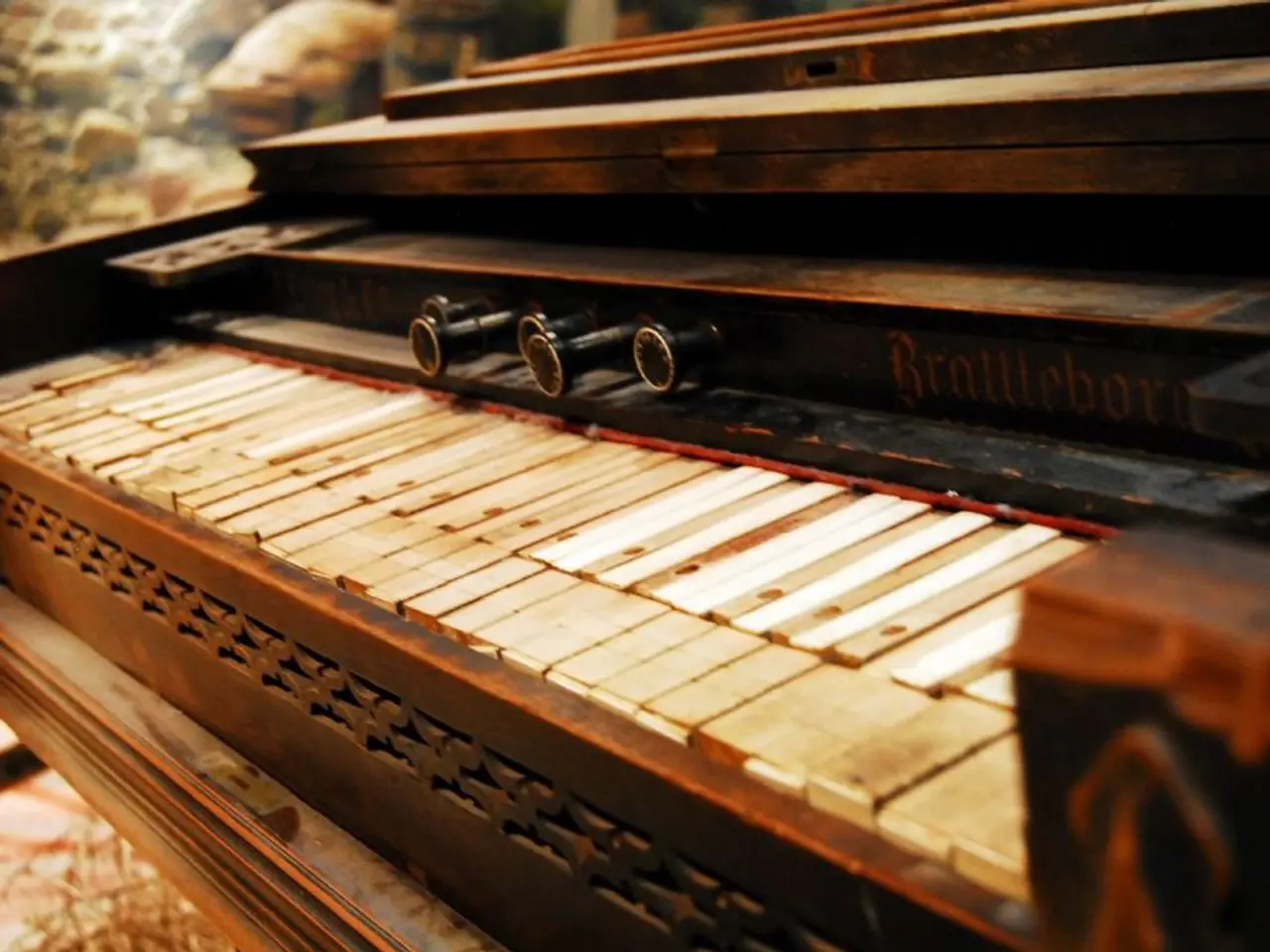Transforming a fully recorded composition into a Piano Solo
In the world of music, rearranging a fully produced piece into a piano ballad is a delicate art. This transformation was recently undertaken for the song "Answers," originally a production with a rich orchestral arrangement. The rearrangement, necessary due to the conditions requiring all music to be live and without playback, aimed to maintain the essence of the original while adapting it to the piano's capabilities.
Carolina Aguirre Anderson, a pianist and friend of the author, was involved in the rearrangement process. She extracted and focused on the melody, bringing the recognizable identity of the piece to the forefront. The signature loop that was played by the strings in the main production entered the rearrangement, providing a familiar touch.
To create a sense of tension without being overly obvious, the rhythm from "This is me" from "The Greatest Showman" was copied from bar 25 to add tension to the background as the chorus was coming. Syncopated phrases were added to the rearrangement to create a pizzicato sensation, contributing to the overall tension.
Simplifying the harmony was another key step. Reduced complex arrangements into essential chordal structures that could be played on the piano were used. The rhythm section was not recreated in its entirety, with a significant part of the string section not being recreated in the piano rearrangement.
The arrangement added a sudden change of mode to create tension in the second chorus, and the bass notes in the fast passage created a shadowy, muddy chaos, adding to the emotional depth of the piece. The piano arrangement serves as an accompanying instrument for the leading voice, with the composer enjoying the arrangement as it is.
The rearrangement aimed to be delicate and grow stronger, and this was achieved through adjusting tempo and dynamics, reorganizing structural elements, adding expressive elements, and using octave doubling and chord extensions selectively. The composer may turn the song into a piano piece in the future, providing fans with another avenue to experience the emotional narrative of "Answers."
For those interested in arranging and composing songs, the article "Rearranging a fully produced piece into a Piano Ballad" may be useful. The link to the article "Composition insight" by Juan Rezzuto is provided for further reading: https://www.our website/post/2017/07/16/composition-insight. The composer found a solution by creating harmonic tension and texture, demonstrating the power of musical adaptation.
The composer, intrigued by the challenge, delved into the process of transforming "Answers," using the piano as the primary source of entertainment and music. Carolina Aguirre Anderson, a close friend and pianist, assisted in the endeavor, carefully watching the melody unfold and highlighted its identity.







